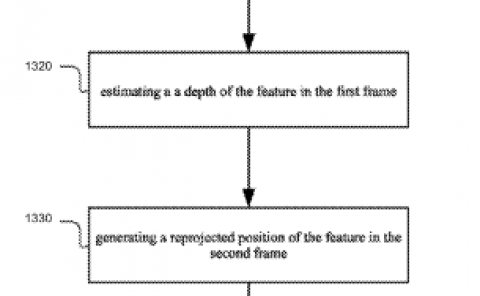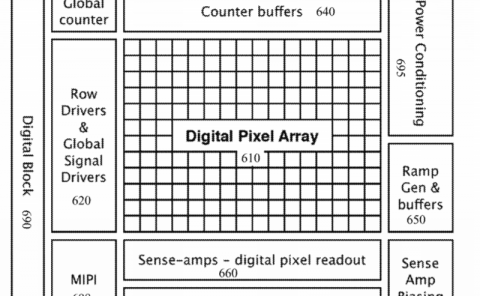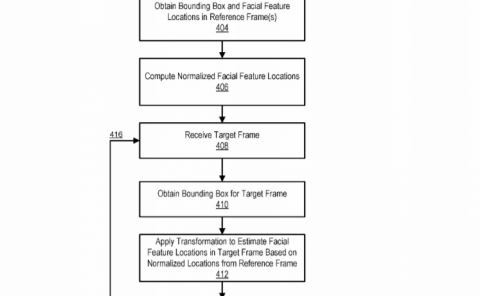Oculus Patent | Resistive-capacitive deformation sensor
Patent: Resistive-capacitive deformation sensor
Publication Number: 20180372562
Publication Date: 2018-12-27
Applicants: Oculus

Abstract
A deformation sensing apparatus comprises an elastic substrate, a first strain-gauge element formed on a first surface of the elastic substrate, and configured to output a first signal in response to a strain applied in a first direction, and a second strain-gauge element formed on a second surface of the elastic substrate opposite to the first surface, and configured to output a second signal in response to a strain applied in the same first direction.
Background
Strain sensors measure strain resulting from applied deformations based on a change in an electrical characteristic (e.g., a resistance, an inductance, or a capacitance) of electrical elements (such as resistive strain gauges, capacitive sensors, or inductive sensors) formed therein. However, strain sensors that measure an individual electrical characteristic (e.g., a resistance change or a capacitance change) resulting from applied deformations in isolation lack the ability to discern and differentiate different types of deformations. As one example, a resistive strain-gauge lacks the ability to disambiguate a stretching deformation from a bending deformation.
Summary
A deformation sensing apparatus comprises an elastic substrate, a first strain-gauge element formed on a first surface of the elastic substrate and configured to output a first signal in response to a strain applied in a first direction, and a second strain-gauge element formed on a second surface of the elastic substrate opposite to the first surface and configured to output a second signal in response to a strain applied in the same first direction.
In one or more embodiments, the deformation sensing apparatus comprises two horseshoe-shaped (e.g., U-shaped) resistors each formed on opposing parallel sides of the elastic and dielectric substrate, forming a capacitor therebetween. Using sensed resistances from each of the two resistors in combination with the measured capacitance therebetween, the sensor provides three signals that can be used to discriminate between different types of applied deformations. For example, the combination of the three signals indicative of the two resistances and the capacitance can be used to disambiguate stretching versus bending of the substrate. The deformation sensor may be used in wearable devices such as gloves, headsets, or any other fabric that conforms to a body part and can be used to detect and disambiguate movement of that body part.
According to one or more embodiments, a wearable device comprises one or more deformation sensors, a measurement circuit, and a deformation analyzer. In such embodiments, each deformation sensor includes an elastic substrate comprising a flexible, electrically-insulating dielectric material; a first strain-gauge element formed on a first surface of the elastic substrate and configured to output a first signal in response to a strain applied in a first direction; and a second strain-gauge element formed on a second surface of the elastic substrate opposite to the first surface and configured to output a second signal in response to a strain applied in the same first direction. In some embodiments, the deformation sensor is configured to output a third signal responsive to an applied deformation, the third signal being measurable between one of the first and second terminals of the first strain-gauge element and one of the third and fourth terminals of the second strain-gauge element. The measurement circuit configured to measure the first signal from the first strain-gauge element and the second signal from the second strain-gauge element in response to the applied deformation. The deformation analyzer configured to compute a measure of stretch deformation and a measure of flex deformation of the sensing apparatus, in the applied deformation, based on the measured first signal from the first strain-gauge element, the measured second signal of the second strain-gauge element, and the third signal.
In some embodiments, each of the first and second strain-gauge elements of the deformation sensor within the wearable device has a horse-shoe shape comprising an arcuate head and a pair of elongate leads extending from ends of the arcuate head; alignment of the shapes of the first and second strain-gauge elements correspond along an axis orthogonal to the first and second surfaces of the elastic substrate. In such embodiments, the aligned shapes of the horse-shoes are configured to circumscribe (surround) an articulating joint, where a movement of the joint results in a corresponding deformation of the deformation sensor.



